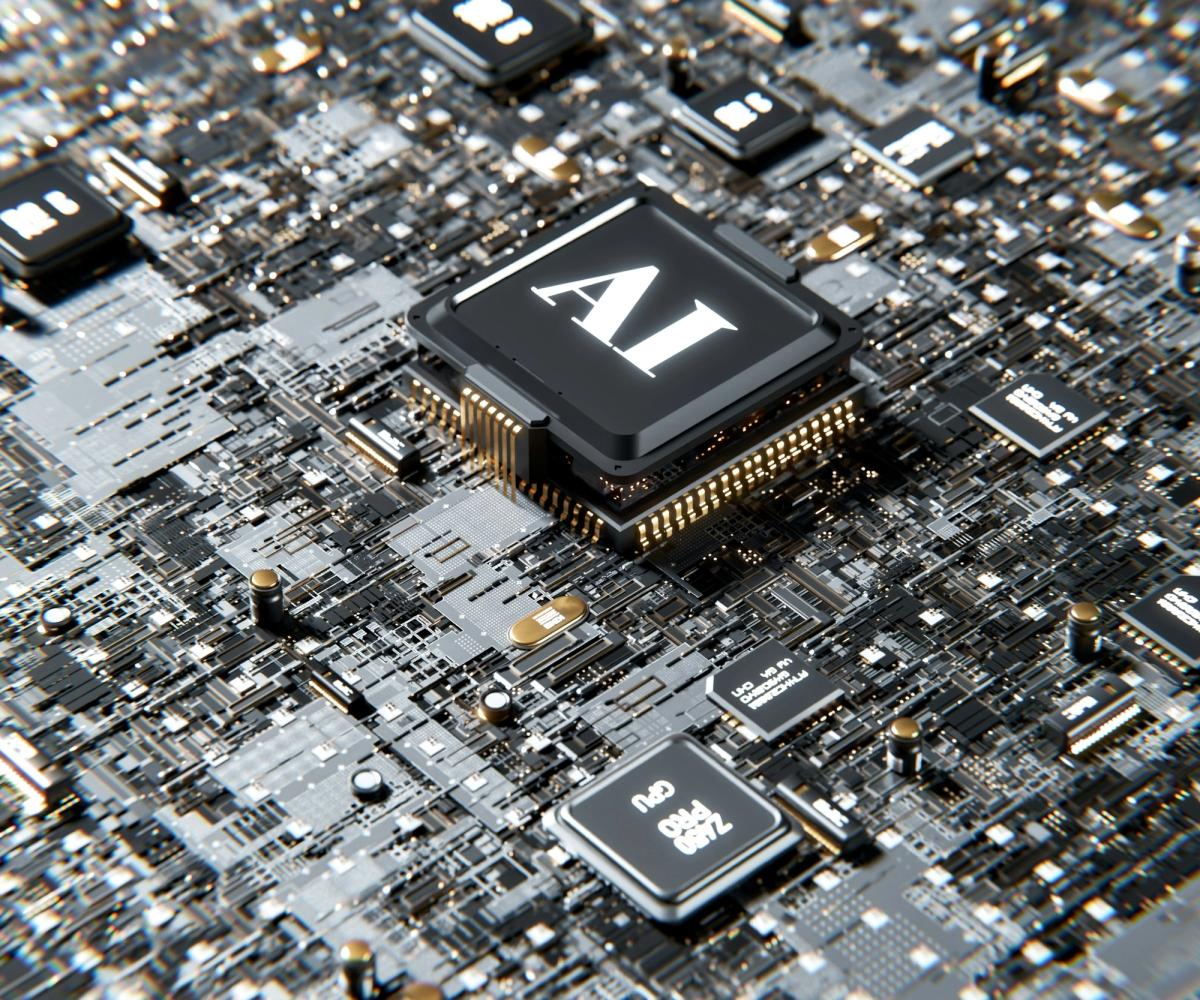What Are the Different Types of AI Learning Models & How to Use Them
Published on Mar 6, 2025
Get Started
Fast, scalable, pay-per-token APIs for the top frontier models like DeepSeek V3 and Llama 3.3. Fully OpenAI-compatible. Set up in minutes. Scale forever.
Imagine you're at a crossroads, deciding which direction will lead to the best results for your business. While each route has promising benefits, each choice will yield different outcomes. This is a lot like selecting an AI learning model. Each model has unique properties that make it suitable for specific tasks and not others. Choosing the right one for your business will maximize efficiency and accuracy for your particular goals. In this guided article, we'll help you confidently identify and implement the best AI learning model for your next project. We will also touch upon the difference between AI Inference vs Training.
One valuable resource to help you achieve your objectives is AI inference APIs. These easy-to-use tools can help you quickly evaluate how well different models will perform before you commit to one.
What are the Different Types of AI Learning Models?

Various AI learning models exist because they help artificial intelligence complete tasks more efficiently and accurately. Different models have distinct capabilities, so each one is suited to specific functions. Depending on the type of AI model used, it can dramatically change the outcome of a project.
AI Learning Models: Knowledge-Based Classification
AI learning models can be classified into two main types based on their representation of knowledge:
- Inductive
- Deductive
Inductive Learning
This type of AI learning model is based on inferring a general rule from datasets of input-output pairs. Algorithms such as Knowledge-Based Inductive Learning (KBIL) are a great example of this AI learning technique. KBIL focuses on finding inductive hypotheses on a dataset with the help of background information.
Deductive Learning
This AI learning technique starts with a series of rules and infers new, more efficient regulations in the context of a specific AI algorithm. Explanation-based learning (EBL) and Relevance-Based Learning (RBL) are examples of deductive techniques.
EBL extracts general rules from examples by “generalizing” the explanation. RBL focuses on identifying attributes and deductive generalizations from simple examples.
AI Learning Models 101: The Main Types of Machine Learning Models

AI learning models are the methods AI uses to make predictions, classify data, or generate content. The type of model that works best for a specific task depends on the kind of data available and the end goal.
Machine Learning Models
Machine learning is a subset of AI. While all machine learning is AI, not all AI is machine learning. Data scientists train algorithms with labeled, unlabeled, or mixed data to create a machine learning model.
There are different types of machine learning algorithms for various goals:
- Classification recognizes certain entities in the dataset and draws conclusions about how they should be labeled or defined.
- Regression helps make predictions. It understands the relationship between independent and dependent variables.
- Data is modified to best execute a specific task and becomes a machine learning model (ML model). ML models examine certain variables within the data and find patterns that help make predictions.
Machine learning models will improve as they are trained and exposed to more data.
Supervised Learning Models
Supervised learning is the most common type of machine learning and the most straightforward way that AI models learn. It’s called “supervised” learning because the algorithm is trained with human-created, labeled datasets. The labels assist the algorithm and help the ML model understand precisely how to classify data in a way the data scientist wants. Using labeled datasets with examples of inputs (features) and outputs (labels), supervised learning algorithms are trained to predict outcomes and identify patterns. Once the model is trained and tested, it can make predictions with unknown data based on the previous knowledge it has learned.
Unsupervised Learning Models
Unsupervised learning is another type of machine learning, but it’s not as popular as supervised learning. While supervised learning requires labeled data, unsupervised learning finds patterns without human instruction. Models follow self-learning algorithms that enable them to receive raw data and create rules. The unsupervised learning model structures data based on similarities, differences, and patterns. No data scientist is required with unsupervised learning because the model is designed to work without instructions on handling each piece of data.
Deep Learning Models
Deep learning is an advanced type of ML that learns to identify complex patterns in:
- Text
- Images
- Sounds
With deep learning, data is processed and classified through layers, and each layer has a role in processing input data.
How Hidden Layers Enhance Deep Learning: The Role of Multiple Layers in Pattern Recognition and Data Processing
Here’s a quick look at the different types of layers in a deep learning neural network:
- The input layer receives raw data and passes it through the network.
- Hidden layers assess and process the input data and transform it into an output.
- The output layer uses the processed data to deliver a result.
A basic neural network typically has one or two hidden layers. But a deep learning neural network can have hundreds. All the layers analyze data differently and can identify patterns that aren’t possible with basic machine learning methods.
Examples Of Common AI Models
There’s an overwhelming number of different AI models. Whether you need to classify different types of flowers or predict healthcare outcomes, there’s a specific model for anything you need to do. The following is a small sample list of common types of AI models.
Common Machine Learning Models
- Linear regression predicts a continuous value. For example, predicting house prices based on features like size and location.
- Logistic regression is used for binary classification tasks. The model provides only two possible answers. An example is email spam detection. Logistic regression determines whether an email is spam (yes) or not (no).
- Decision Trees are models that use a tree-like graph of decisions and their possible consequences. They are best for classification and regression tasks.
Common Deep Learning Models
- Convolutional Neural Networks (CNNs) process grid-like data, such as images. They are powerful for tasks like image classification, object detection, and even game play.
- Recurrent Neural Networks (RNNs) are suited for sequential data like time series or natural language. RNNs are for applications like language modeling and machine translation.
- Long-short-term memory Networks (LSTMs) are a special kind of RNN capable of learning long-term dependencies. This makes them effective for tasks involving sequential data over long sequences.
Common Reinforcement Learning Models
- Q-Learning is a model-free reinforcement learning algorithm to learn the value of an action in a particular state.
- Deep Q Networks (DQN) combine Q-learning with deep neural networks. DQNs are for complex decision-making tasks, such as playing video games at a superhuman level.
Policy Gradient Methods optimize a policy’s parameters directly by gradient descent. These are for scenarios where the action space is high-dimensional or continuous.
AI Learning Models: Feedback-Based Classification
Based on feedback characteristics, AI learning models can be classified as:
- Machine learning
- Supervised learning
- Unsupervised learning
- Deep learning
Machine Learning Models
Machine learning is a subset of AI. While all machine learning is AI, not all AI is machine learning. Data scientists train algorithms with labeled, unlabeled, or mixed data to create a machine learning model. There are different types of machine learning algorithms for various goals:
- Classification recognizes certain entities in the dataset to conclude how they should be labeled or defined.
- Regression helps make predictions. It understands the relationship between independent and dependent variables.
Data is modified to execute a specific task best and becomes an ML model. ML models examine certain variables within the data and find patterns that help make predictions. ML models will improve as they are trained and exposed to more data.
Related Reading
- Model Inference
- MLOps Best Practices
- MLOps Architecture
- Machine Learning Best Practices
- AI Infrastructure Ecosystem
6 Steps for Training an AI Learning Model

1. Prepare the Data: The Crucial First Step in Training an AI Model
The first step in training an AI model is preparing your data by collecting, cleaning, and preprocessing the information you will use to train the model. The data's quality and relevance will significantly impact its performance, making this step critical.
The most common methods of gathering data are web scraping, crowdsourcing, open-source data collection, in-house data collection, synthetic data generation, and sensor data collection. The following table gives a summary of each technique:
- Web Scraping involves using automated tools to extract structured data from websites. This method is commonly used by e-commerce companies for competitive analysis, particularly for tracking product and pricing data.
- Crowdsourcing gathers data from a large group of people via online platforms. Social media platforms utilize this approach for sentiment analysis, leveraging public input to assess trends and opinions.
- Open-Source Data Collection relies on publicly available datasets. Research institutions frequently use this method to train image recognition models, benefiting from freely accessible data repositories.
- In-House Data Collection involves gathering data from internal systems, surveys, and experiments. Software companies often use this approach to develop proprietary tools, ensuring the data aligns with their specific needs.
- Synthetic Data Generation uses algorithms and simulations to create artificial data. Healthcare organizations apply this technique to develop and test AI algorithms for medical diagnosis and treatment planning, particularly when handling confidential patient data.
- Sensor Data Collection captures data from cameras, GPS, and IoT devices. Manufacturing and industrial companies rely on this method for training predictive maintenance models, optimizing operations through real-time insights.
2. Select the AI Model: Picking the Perfect Tool for the Job
Selecting the appropriate AI model involves considering factors such as the size and structure of your dataset, the computational resources available, and the complexity of the problem you’re trying to solve.
Some of the most common AI training models include the following:
- Linear Regression: Identifies the relationship between a dependent variable and one or more independent variables; typically used for forecasting sales and economic trends.
- Logistic Regression: Predicts binary outcomes; usually applied in credit scoring and medical diagnosis.
- Decision Trees: These split data into branches to make predictions based on feature values. They are suitable for customer segmentation and risk assessment.
- Random Forests: Combines multiple decision trees for better accuracy; often deployed in fraud detection and recommendation systems.
- Support Vector Machines (SVMs): Determine the best boundaries to separate data categories; frequently used in image recognition and text classification
- Neural Networks: Use layers of interconnected nodes to learn complex patterns; widely used for image and speech recognition and natural language processing (NLP).
3. Choose the Training Technique: Finding the Right Fit for Your AI Model
Choosing the proper learning technique involves weighing all the same factors as in the model selection step to optimize the performance of your AI models.
The following learning methods can be applied to AI training:
- Supervised Learning: This relies on labeled data where inputs are paired with desired outputs; it is ideal for classifying medical images or predicting credit card fraud, where the relationship between the input and target variables is known.
- Unsupervised Learning: Deals with unlabeled datasets to discover hidden patterns and structures; useful for customer segmentation by grouping customers based on similarities without predefined labels.
- Semi-supervised Learning: Combines supervised and unsupervised learning and uses labeled and unlabeled data to enhance functionality and refine precision; applied in scenarios where labeled data is difficult or expensive, but unlabeled data is available, like in medical image analysis.
4. Train Your AI Model: Molding the Model to Your Data
Feed your prepared data into the model to identify errors and make adjustments to increase accuracy. During this phase, it’s critical to be mindful of overfitting, which occurs when your AI model performs well on the training data because of memorization instead of learning, leading to the failed interpretation of new, unseen data.
5. Validate Your AI Model: Checking for Errors and Overfitting
Validate the performance of your AI model by evaluating how it performs on a separate and often more complex dataset not used during the training process. This step will help reveal overfitting problems and determine if the model needs additional training or modification.
6. Test Your AI Model for Readiness: Making Sure Your Model Is Ready for Action
The final step is to test your AI model on an independent dataset to assess its real-world applications and ensure it can be used effectively in production.
It is prepared to go live if it performs as expected and delivers correct results based on unstructured data. If not, fine-tune the model by gathering more data, retraining, and retesting it to enhance its precision.
Related Reading
- AI Infrastructure
- MLOps Tools
- AI as a Service
- Machine Learning Inference
- Artificial Intelligence Cost Estimation
- AutoML Companies
- Edge Inference
- LLM Inference Optimization
Start building with $10 in Free API Credits Today!

Inference delivers OpenAI-compatible serverless inference APIs for top open-source LLM models, offering developers the highest performance at the lowest cost in the market. Beyond standard inference, Inference provides specialized batch processing for large-scale async AI workloads and document extraction capabilities designed explicitly for RAG applications.
Start building with $10 in free API credits and experience state-of-the-art language models that balance cost-efficiency with high performance.





